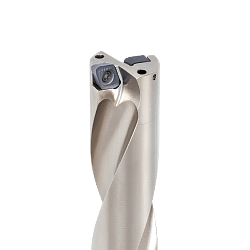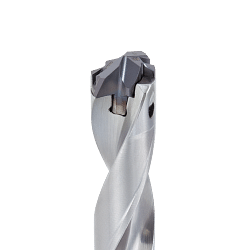Register and use the discount code NEWWELCOME to get 10% off on your first purchase. GET DISCOUNT.
Register and use the discount code NEWWELCOME to get 10% off on your first purchase. GET DISCOUNT.
Register and use the discount code NEWWELCOME to get 10% off on your first purchase. GET DISCOUNT.
Free shipping in 24h from 200€
Catalogues
Customer service
How can we help you?
- Faq
- Customer service
02.927371
- Supporting big orders
02.38298620
-
info@linkindustrialtools.it
- Request assistance with form
Or contact us with the chat in the lower right corner
- All products
 Integral cutting tools
Integral cutting tools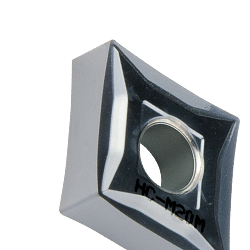 Turning tools
Turning tools Thread tools
Thread tools Thread tools
Thread tools- All products
- Thread inserts
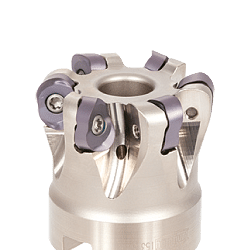 Milling cutters
Milling cutters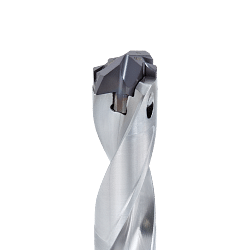 Drilling tools
Drilling tools Drilling tools
Drilling tools- All products
- Indexable drill bits
- Indexable drill heads
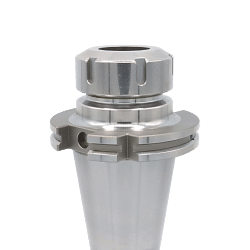 Clamping systems
Clamping systems Measuring and precision tools
Measuring and precision tools Measuring and precision tools
Measuring and precision tools- All products
- Digital calipers with readings to 0.01
- Analogue calipers
- Digital micrometers
- Analogue micrometers
- Bore gauges
- Snap gauges
- Digital gauges
- Analogue gauges
- Touch probes
- Zero setters and edge finders
- Inspection plates
- Altimeters
- Height gauges
- Squares and levels
- Threaded rings
- Gauge blocks
- Calibrated tapes and thickness gauges
- Digital and analogue hardness testers
- Roughness testers
- Microscopes, lenses and visors
- Digital thermo-hygrometer to measure moisture
- Reset benches
- Optical profile projector
- Professional, digital dynamometers
- Laboratory scales
- Digital amperometric pliers
- Thickness and adhesion gauges
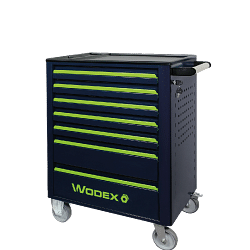 Hand tools
Hand tools Hand tools
Hand tools- All products
- Combination wrenches
- Spanners
- Hook wrenches
- Tubular wrenches
- Hexagon keys
- Torx wrench
- Socket wrenches
- Screwdrivers
- Torque wrenches
- Torque screwdriver
- Inserts and bits for screw drivers
- Tool trolleys
- Workshop pliers
- Wire strippers
- Cable strippers
- Cutting nippers
- Professional scissors
- Nippers
- Professional shears
- American or Swedish pipe wrench
- Adjustable wrench
- Pipe tools
- Pipe cutter for plumber
- Cutter
- Hacksaws
- Deburring tools
- Chisels
- Hammers and mallets
- Mechanical and conical pullers
- Clamps
- Tap wrenches and die stocks
- Riveters
- Flexometers
- Tape measures
- Markers
- Flat squares and rulers
- Professional dividers
- Professional protractors
- Brushes
- Lubricators and spray nozzles
- T-wrenches
- Reversible ratchets
 Abrasives
Abrasives Abrasives
Abrasives- All products
- Cutting discs
- Deburring grinding wheel
- Flap discs
- Fabric discs for surface treatment
- Abrasive fibre discs with Velcro
- Abrasive cloth in rolls, sheets and bands
- Flap wheels with pin and abrasive wheel with hole
- Abrasive wheels for buffing machines
- Abrasive spiral bands
- Abrasive brushes
- Flexible sanders
- Mounted grinding discs
- Polishing felt
- Solid carbide rotary cutters
- HSS rotary cutters
- Abrasive wheels for sharpening and grinding
- Diamond grinding wheels
- Grinding stone
- Diamond paste
- Abrasive stones
- Files and rasps
- Diamond files
- Grinders and polishing equipment
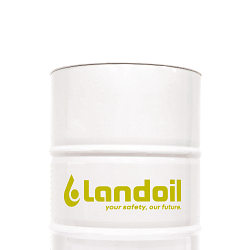 Lubricants for machine tools
Lubricants for machine tools Lubricants for machine tools
Lubricants for machine tools- All products
- Water-miscible coolants
- Neat cutting oil
- Minimal lubrication systems
- Oil for guides and slides
- Drums of hydraulic oil fluid
- Anti-freeze for machine tools
- Air coolers
- Oil separator
- Powders and absorbents for oil
- Aspirators for oil mist
- Accessories for cooling lubricants
- Metal and mould protectors
- Grease and paste
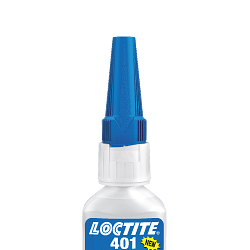 Chemical, adhesives and sealants
Chemical, adhesives and sealants Chemical, adhesives and sealants
Chemical, adhesives and sealants- All products
- Acrylic, cyanoacrylate and epoxy adhesives
- Guns and silicon sealant
- Threadlocker
- Sealants and retainers
- Release agents, lubricants and anti-seize
- Zinc spray and polishes
- Lubrication accessories
- Protections for maintenance
- Industrial Cleansing
- Handwash
- Industrial cloths and rags
- Welding machines
- Electrodes
- Clamps, shields and welding masks
- Antispatter
 Safety equipment
Safety equipment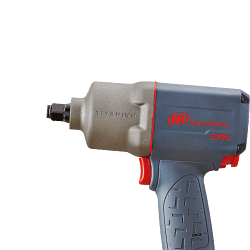 Pneumatics
Pneumatics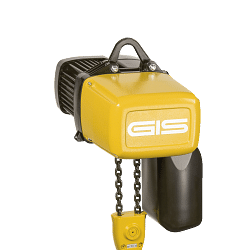 Lifting systems
Lifting systems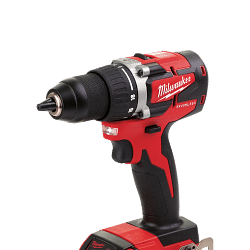 Workshop equipment
Workshop equipment Workshop equipment
Workshop equipment- All products
- Column and bench drills
- Accessories for lathes
- Band saws
- Cut-off machines
- Bench grinders
- Power tools
- Spare parts and accessories for Power Tools
- Saws and hole cutters: wood, metal and plasterboard
- Tapered cutters for sheet metal
- Industrial aspirators
- Fume aspirators
- Bench vices
- Technical lamps
- LED torches
- Industrial cable winders
- Trolley wheels
- Quick clamps
- Threaded inserts
- Control knobs
- Packaging accessories and material
- Belt sanders
- Electric tapping machines
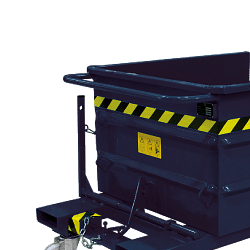 Furnishings and storage
Furnishings and storage Furnishings and storage
Furnishings and storage- All products
- Work benches
- Swivel chairs for office use
- Drawer units for workshops
- Industrial cabinets for warehouses and workshops
- Tool cabinets
- Security cabinets
- Changing room cabinets
- Containers for small metal parts
- Scrap holders
- Workshop trolleys
- Spill pallets for drum storage
- Shelves for warehouses and offices
- Cantilever shelving
- Aluminium ladders
- Modular plinths
- Units and cabinets for waste recycling
 Brand
BrandPromotions
 Bestseller
Bestseller- Catalogues
-
Catalogues
Customer service
How can we help you?
- Faq
- Customer service
02.927371
- Supporting big orders
02.38298620
-
info@linkindustrialtools.it
- Request assistance with form
Or contact us with the chat in the lower right corner
< Drilling tools
- Home
- Drilling tools
- Indexable drill bits
Indexable drill bits
Drilling bits with inserts are an essential element in modern machine shops. These tools, designed for precision and efficiency, are essential for anyone working in the metalworking industry. In this in-depth look, we will explore in detail what insert drill bits are, how they are used, the advantages they offer and answer frequently asked questions on this topic.
Introduction to insert drill bits
Insert drill bits are advanced cutting tools mainly used in drilling operations in metallic materials. Unlike conventional drills, these are equipped with interchangeable inserts that can be replaced when worn, without the need to replace the entire drill bit. This innovative design not only extends the life of the tool, but also allows for greater flexibility and adaptability to different applications.
Advantages of insert drill bits
One of the main advantages of insert drills is their ability to reduce operating costs. Since the inserts can be replaced individually, workshops can save on the costs of purchasing new drill bits. In addition, the possibility of using inserts with different geometries and materials allows drilling performance to be optimised for specific types of materials, improving efficiency and quality of work.
Another significant advantage is the reduction in machine downtime. Replacing inserts is a quick and easy operation, which minimises the time required for tool maintenance and allows high productivity levels to be maintained.
Applications of insert drill bits
Insert drills find applications in a wide range of industries, including automotive, aerospace and heavy machinery manufacturing. They are particularly popular in operations that require high precision and high quality finishes, such as the production of critical components for engines and aircraft structures.
Due to their versatility, these drills can be used on a variety of materials, including steel, cast iron, aluminium alloys and composite materials. Choosing the right insert for the specific material is crucial to achieve the best results in terms of tool life and hole quality.
How to choose insert drill bits
The choice of insert drill bits depends on several factors, including the type of material to be machined, the depth and diameter of the hole required, and the specifications of the machinery used. It is also important to consider the cutting speed and feed rate, as these parameters directly influence the performance of the tool.
Inserts are available in a variety of materials, including tungsten carbide, ceramic and polycrystalline diamond. Each material offers specific advantages in terms of wear resistance, cutting capability and tool life. The choice of insert material must be based on the specific requirements of the application and the characteristics of the material to be machined.
Maintenance and care of insert drill bits
To ensure optimum performance and prolong the life of insert drill bits, it is essential to follow proper maintenance practices. Inserts should be inspected regularly for signs of wear or damage and replaced when necessary. In addition, it is important to keep both inserts and drill bit bodies clean to prevent the build-up of chips and debris that could impair performance.
The use of appropriate lubricants during drilling operations is also crucial to reduce friction and heat generated, thus helping to preserve the integrity of the inserts and improve hole quality.
Frequently asked questions about insert drill bits
1. What is the difference between insert drill bits and conventional drill bits?
Insert drills are equipped with interchangeable inserts, while traditional drills are monolithic. This design allows for greater flexibility and reduced operating costs.
2. How do I choose the right inserts for a specific application?
The choice of inserts depends on the material to be machined, the cutting conditions and the application specifications. It is important to consult the manufacturer's guidelines and consider the material characteristics of the insert.
3. What are the wear signals of inserts?
Signs of wear include dull edges, chipping and a decrease in cutting performance. It is important to replace worn inserts to maintain work quality.
4. Can insert drill bits be used on non-metallic materials?
Yes, insert drill bits can be used on non-metallic materials, such as composites and plastics, as long as the appropriate inserts are chosen for the specific material.
5. What are the best practices for maintenance of insert drill bits?
Best practices include regular inspection of inserts, cleaning of tools, use of appropriate lubricants and timely replacement of worn inserts.
Conclusion
Insert drill bits are an advanced and versatile solution for machine shops looking to optimise their drilling operations. With their ability to reduce operating costs, improve efficiency and guarantee high-quality results, these drills are a valuable investment for any metalworking company. Choosing the right inserts and following proper maintenance practices are key steps to reaping the full benefits of these innovative tools.
Read More Read LessIntroduction to insert drill bits
Insert drill bits are advanced cutting tools mainly used in drilling operations in metallic materials. Unlike conventional drills, these are equipped with interchangeable inserts that can be replaced when worn, without the need to replace the entire drill bit. This innovative design not only extends the life of the tool, but also allows for greater flexibility and adaptability to different applications.
Advantages of insert drill bits
One of the main advantages of insert drills is their ability to reduce operating costs. Since the inserts can be replaced individually, workshops can save on the costs of purchasing new drill bits. In addition, the possibility of using inserts with different geometries and materials allows drilling performance to be optimised for specific types of materials, improving efficiency and quality of work.
Another significant advantage is the reduction in machine downtime. Replacing inserts is a quick and easy operation, which minimises the time required for tool maintenance and allows high productivity levels to be maintained.
Applications of insert drill bits
Insert drills find applications in a wide range of industries, including automotive, aerospace and heavy machinery manufacturing. They are particularly popular in operations that require high precision and high quality finishes, such as the production of critical components for engines and aircraft structures.
Due to their versatility, these drills can be used on a variety of materials, including steel, cast iron, aluminium alloys and composite materials. Choosing the right insert for the specific material is crucial to achieve the best results in terms of tool life and hole quality.
How to choose insert drill bits
The choice of insert drill bits depends on several factors, including the type of material to be machined, the depth and diameter of the hole required, and the specifications of the machinery used. It is also important to consider the cutting speed and feed rate, as these parameters directly influence the performance of the tool.
Inserts are available in a variety of materials, including tungsten carbide, ceramic and polycrystalline diamond. Each material offers specific advantages in terms of wear resistance, cutting capability and tool life. The choice of insert material must be based on the specific requirements of the application and the characteristics of the material to be machined.
Maintenance and care of insert drill bits
To ensure optimum performance and prolong the life of insert drill bits, it is essential to follow proper maintenance practices. Inserts should be inspected regularly for signs of wear or damage and replaced when necessary. In addition, it is important to keep both inserts and drill bit bodies clean to prevent the build-up of chips and debris that could impair performance.
The use of appropriate lubricants during drilling operations is also crucial to reduce friction and heat generated, thus helping to preserve the integrity of the inserts and improve hole quality.
Frequently asked questions about insert drill bits
1. What is the difference between insert drill bits and conventional drill bits?
Insert drills are equipped with interchangeable inserts, while traditional drills are monolithic. This design allows for greater flexibility and reduced operating costs.
2. How do I choose the right inserts for a specific application?
The choice of inserts depends on the material to be machined, the cutting conditions and the application specifications. It is important to consult the manufacturer's guidelines and consider the material characteristics of the insert.
3. What are the wear signals of inserts?
Signs of wear include dull edges, chipping and a decrease in cutting performance. It is important to replace worn inserts to maintain work quality.
4. Can insert drill bits be used on non-metallic materials?
Yes, insert drill bits can be used on non-metallic materials, such as composites and plastics, as long as the appropriate inserts are chosen for the specific material.
5. What are the best practices for maintenance of insert drill bits?
Best practices include regular inspection of inserts, cleaning of tools, use of appropriate lubricants and timely replacement of worn inserts.
Conclusion
Insert drill bits are an advanced and versatile solution for machine shops looking to optimise their drilling operations. With their ability to reduce operating costs, improve efficiency and guarantee high-quality results, these drills are a valuable investment for any metalworking company. Choosing the right inserts and following proper maintenance practices are key steps to reaping the full benefits of these innovative tools.


